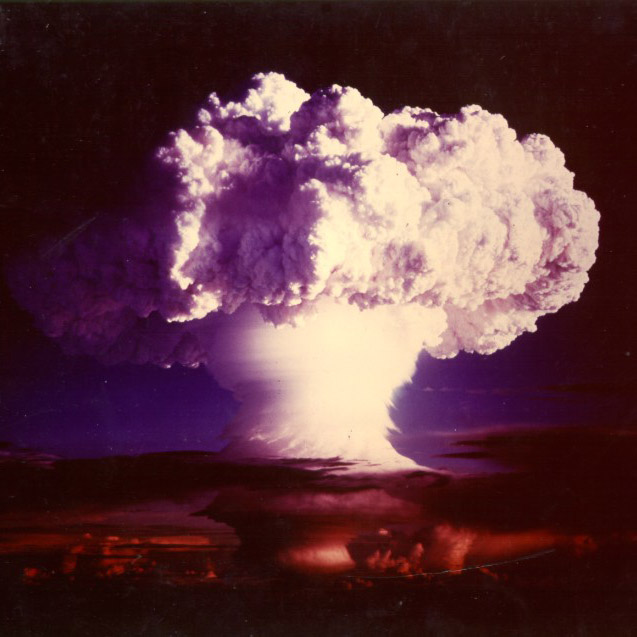Einsteiniu
99
Es
Grupă
n/a
Perioadă
7
Bloc
f
Protoni
Electroni
Neutroni
99
99
153
Proprietăți Generale
Număr atomic
99
Masă atomică
[252]
Numar de masa
252
Categorie
Actinide
Culoare
n/a
Radioactive
Da
Numit după Albert Einstein
Structură cristalină
n/a
Istoric
Einsteiniul a fost descoperit ca o componentă a resturilor primei explozii a bombei cu hidrogen în 1952.
A fost identificat de Albert Ghiorso și colaboratorii de la Universitatea California, Berkeley în colaborare cu Laboratoarele Naționale Argonne și Los Alamos, în praful radioactiv de la testul nuclear Ivy Mike.
Noul element a fost produs de explozia nucleară în cantități minuscule prin adăugarea a 15 neutroni la uraniul-238.
A fost identificat de Albert Ghiorso și colaboratorii de la Universitatea California, Berkeley în colaborare cu Laboratoarele Naționale Argonne și Los Alamos, în praful radioactiv de la testul nuclear Ivy Mike.
Noul element a fost produs de explozia nucleară în cantități minuscule prin adăugarea a 15 neutroni la uraniul-238.
Electroni pe nivelul de energie
2, 8, 18, 32, 29, 8, 2
Configurație electronică
[Rn] 5f11 7s2
Einsteiniu este primul metal divalent din seria actinidelor
Proprietăți Fizice
Fază
Solid
Densitate
8,84 g/cm3
Punct de topire
1133,15 K | 860 °C | 1580 °F
Punct de fierbere
-
Energie de fuziune
n/a kJ/mol
Energie de evaporare
n/a kJ/mol
Căldură specifică
- J/g·K
Abundența în scoarța Pământului
n/a
Abundența în Univers
n/a

Credite imagine: Wikimedia Commons (National Nuclear Security Administration)
Einsteinium a fost observat pentru prima dată în urma testului nuclear Ivy Mike
Numarul CAS
7429-92-7
Număr CID PubChem
n/a
Proprietăți Atomice
Rază atomică
-
Rază de covalență
-
Electronegativitate
1,3 (Scara lui Pauling)
Potențial de ionizare
6,42 eV
Volum molar
28,5 cm3/mol
Conductivitate termică
0,1 W/cm·K
Număr de oxidare
2, 3
Aplicații
Einsteiniul este folosit în principal în scopuri de cercetare științifică.
Izotopul rar einsteinium-254 este preferat pentru producerea de elemente ultragrele.
Einsteinium-254 a fost folosit ca marker de calibrare în spectrometrul de analiză chimică al sondei lunare Surveyor 5.
Izotopul rar einsteinium-254 este preferat pentru producerea de elemente ultragrele.
Einsteinium-254 a fost folosit ca marker de calibrare în spectrometrul de analiză chimică al sondei lunare Surveyor 5.
Einsteiniul este dăunător din cauza radioactivității sale
Izotopi
Izotopi stabili
-Izotopi instabili
240Es, 241Es, 242Es, 243Es, 244Es, 245Es, 246Es, 247Es, 248Es, 249Es, 250Es, 251Es, 252Es, 253Es, 254Es, 255Es, 256Es, 257Es, 258Es